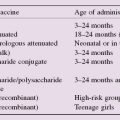The success of organ grafts between identical (‘syngeneic’*) twins, and their rejection in all other cases, reflects the remarkable strength of immunological recognition of cell-surface antigens within a species. This is an unfortunate (and in the evolutionary sense unforeseeable) result of the specialization of T cells for detecting alterations of MHC antigens, upon which all adaptive responses depend (for a reminder of the central role of T-helper cells see Figs 19 and 21), plus the enormous degree of MHC polymorphism (different antigens in different individuals; see Fig. 11). It appears that when confronted with ‘non-self’ MHC molecules, T cells confuse them with ‘self plus antigen’, and in most cases probably ‘self plus virus’; several clear examples of this have already been found in mouse experiments. This may be one of the reasons for MHC polymorphism itself: the more different varieties of ‘self’ a species contains, the less likely is any particular virus to pass undetected and decimate the whole species. Differences in red cell (‘blood group’) antigens also give trouble in blood transfusion (top right) because of antibody; here the rationale for polymorphism is less obvious, but it is much more restricted (e.g. six ABO phenotypes compared with over 1012 for MHC). The ‘minor’ histocompatibility and blood group antigens appear to be both less polymorphic and antigenically weaker.
Graft rejection can be mediated by T and/or B cells, with their usual non-specific effector adjuncts (complement, cytotoxic cells, macrophages, etc.), depending on the target: antibody destroys cells free in the blood, and reacts with vascular endothelium (e.g. of a grafted organ; centre) to initiate type II or III hypersensitivity, while T cells attack solid tissue directly or via macrophages (type IV). Unless the recipient is already sensitized to donor antigens, these processes do not take effect for a week or more, confirming that rejection is due to adaptive, not innate, immunity.
Successful organ grafting relies at present on (top left) matching donor and recipient MHC antigens as far as possible (relatives and especially siblings are more likely to share these), and (bottom right) suppressing the residual immune response. The ideal would be (bottom left) to induce specific unresponsiveness to MHC antigens, but this is still experimental (see Fig. 40).
Typing and Matching
For blood transfusion, the principle is simple: A and/or B antigens are detected by agglutination with specific antisera; this is always necessary because normal individuals have antibody against whichever antigen they lack. Rh (Rhesus) antigens are also typed to avoid sensitizing women to those that a prospective child might carry, as Rh incompatibility can cause serious haemolytic disease in the fetus. Minor antigens only cause trouble in patients sensitized by repeated transfusions. Other possible consequences of blood transfusion are sensitization against MHC antigens carried on B cells and, in severely immunodeficient patients, GVH (graft-versus-host) reactions by transfused T cells against host antigens. The latter is a major complication of bone-marrow grafting.
Stay updated, free articles. Join our Telegram channel

Full access? Get Clinical Tree




